God of War might be the game of the generation, precisely because it so smartly adapts the past 10 years' best games
God of War’s brilliance didn’t happen in isolation. From Dark Souls to Destiny, it’s a masterpiece of intelligent adaptation
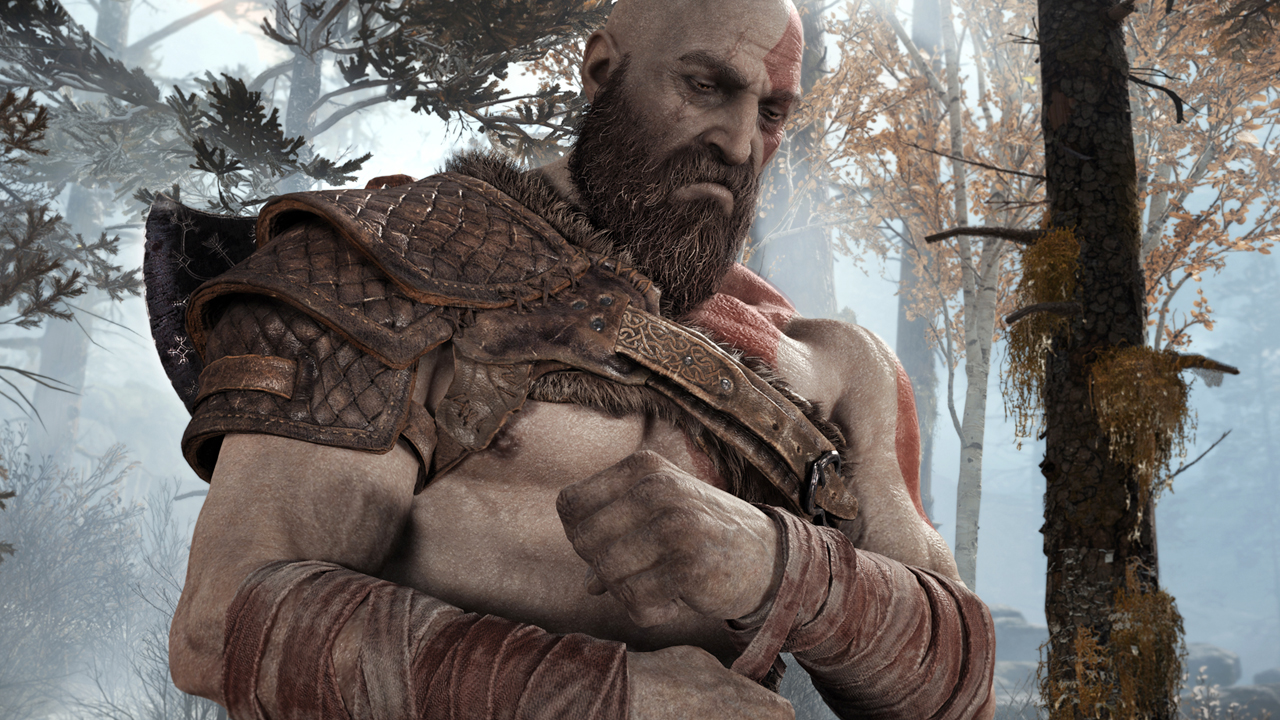
God of War is no stranger to ‘Game of the generation’ claims. And while you can debate the minutiae of that ranking of your own time, there’s a certain context in which I feel the statement is unassailable in its accuracy. The more I play it, and the more I love it (which is a lot), the more I realise that God of War is all the games of the generation.
Let me back up. What I mean by that is that across the full gamut of its creative intent, gameplay systems, world-building, and general approach pretty to much everything, Sony Santa Monica’s Norse masterpiece iterates on so many of the most distinctive games and influences from the medium’s last seven years or so to act as a kind of cumulative full-stop on an era. A summation of what games have done, how they’ve evolved, and where they’re at now, at least in the AAA space. And most importantly, it does this without being a grab-bag of stolen ideas, but by understanding the essence of each of these disparate concepts, and entirely repurposing them to serve its own needs. We’re talking about everything from RPGs to FPS here. But it all started when I noticed how well God of War adapts…
- The God of War ending explained
- How to get the God of War secret ending
- What Norse mythology (and the MCU) can tell us about a God of War sequel
Dark Souls
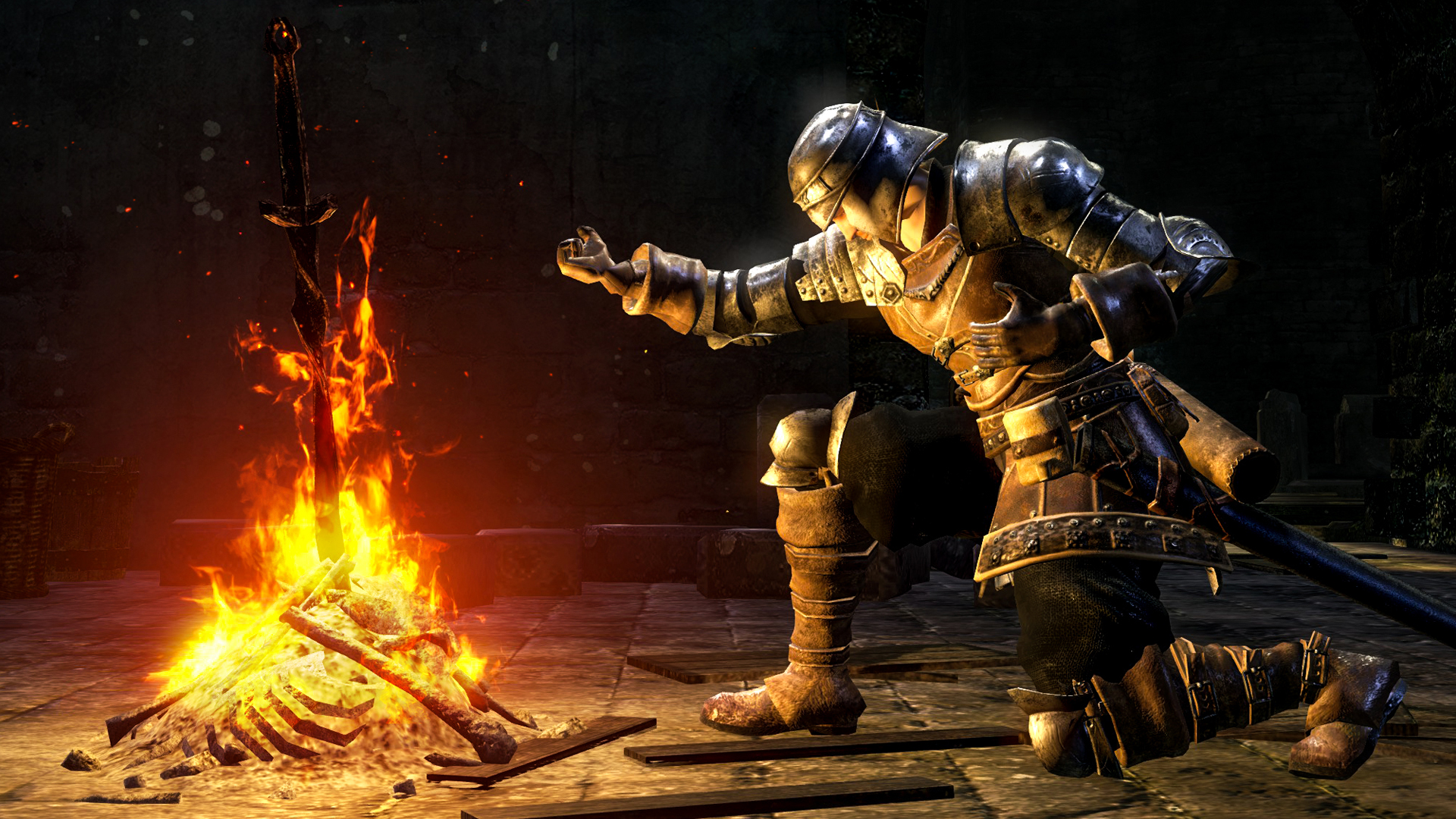
Of course, God of War doesn’t subscribe to the same stern philosophy as From Software’s games - it has generous checkpoints and is far less threatening - but it does have a very similar ‘linear open-world’ spirit, with comparable philosophical purpose. It’s all about blending the focused, bespoke, deliberately curated pacing of hand-crafted, linear level design with the rewarding essence of discovery and expansion that comes from open-world exploration.
For context of what I’m talking about, Dark Souls sculpts its semi-open world out of a series of branching, linear paths (imagine a railway network rather than an open field) loosely connected at a central hub. In doing this, From’s game then creates an extra level of tangibility, believability, and explorable intrigue in the way those distinct branches operate within themselves. Rather than cheating its way around spatial design with the kind of connective smoke and mirrors that many video games traditionally use, Souls ensures that every one of its environments makes total, internal sense, and eventually links back up with itself in order to create retroactive shortcuts between end and beginning.
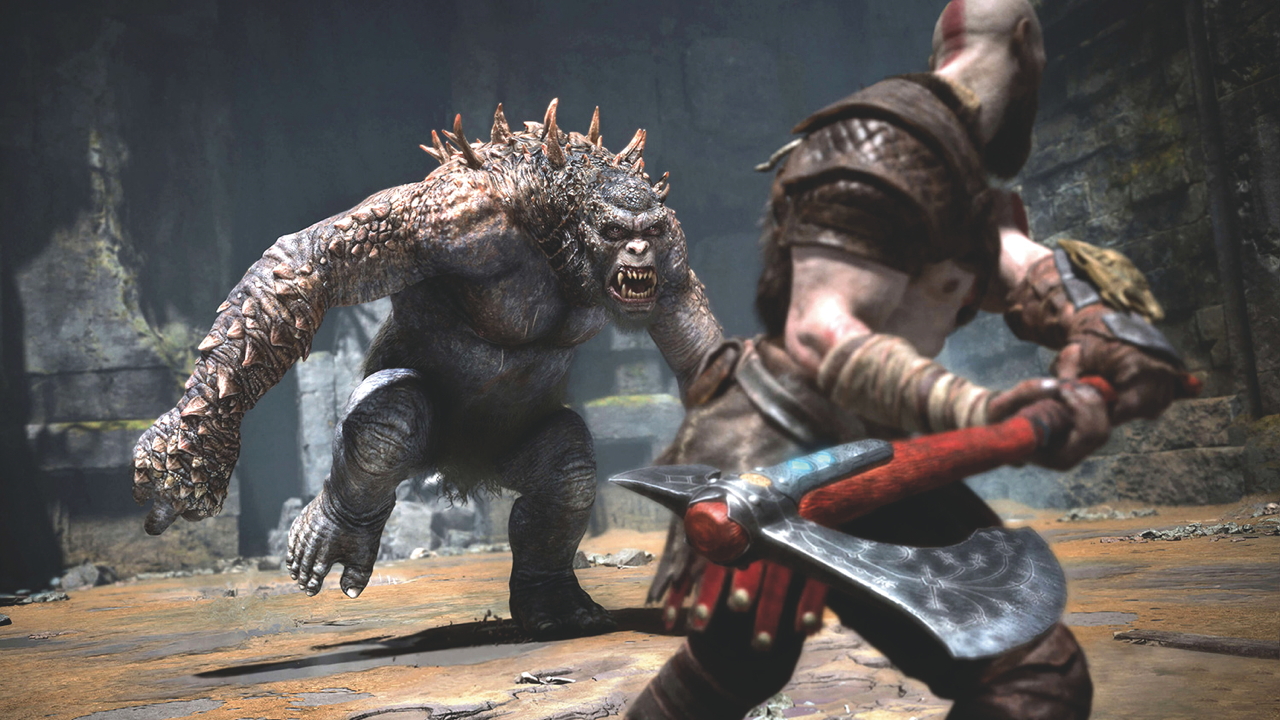
Sometimes there are multiple jump-points, but they can only ever be unlocked in a backward direction, making them a gratifying reward for steady forward progress. You get the immediate, very particular emotional feedback that comes with successfully braving a risky push into unknown territory off the ‘correct’ path, and a steady, longer-term sense of empowerment through gradual, step-by-step knowledge and mastery of a whole world, made all the more meaningful for the believability of that world’s connected architecture.
God of War mirrors all of this to varying degrees, from its numerous small, off-path loops leading to various valuable loot stashes and hidden reverse short-cuts, to its facility to fast-travel back to the game’s central hub via warp gates. Combined, it’s a system that also heavily echoes Dark Souls’ late-game bonfire teleportation mechanic. And that’s before you even notice how both games maintain the balance of freedom and linearity by ‘soft-gating’ areas via enemy difficulty, meaning that progress in the ‘wrong’ direction is technically allowed in exchange for high combat skill, but the ‘right’ way is always the path of least resistance.
So yes, a few hours into God of War, and I was beaming. After years of games compared weakly to Dark Souls only for their difficulty, with little understanding of the series’ specific relationship between player and world, I finally had a game that understood that essence, and translated it into an experience with an entirely different feel. But continuing, I realised there was much more to talk about. Starting with the obvious.
Sign up to the GamesRadar+ Newsletter
Weekly digests, tales from the communities you love, and more
The Last of Us
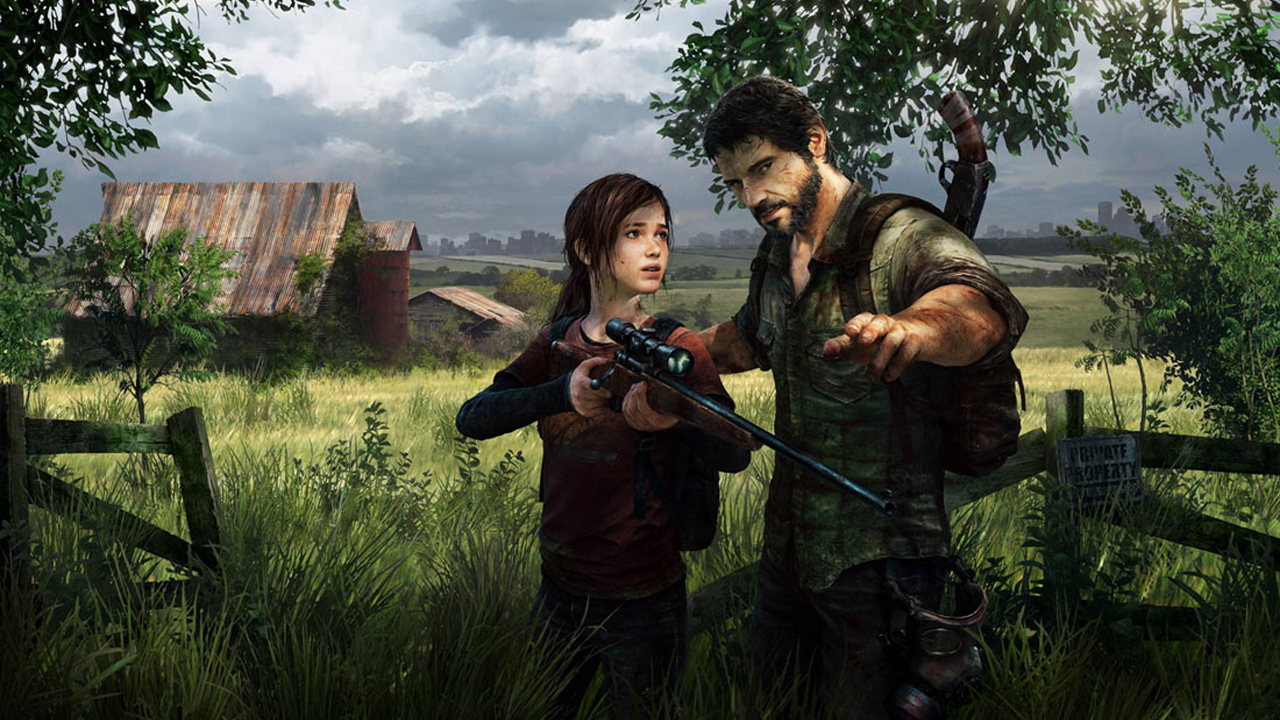
We all called this parallel the instant God of War was announced. Admittedly, this one perhaps says more about Sony’s current mindset as a publisher than about God of War in isolation, but there’s still a very specific through-line of creative intent here, making Sony Santa Monica’s game part of a clear lineage. Over the last generation, Sony seems to have taken it upon itself to drive the cause of truly adult video game narrative and, as this crusade has continued, certain key tropes have begun to crystalise.
An aging, worn-out protagonist, full of regret and on a slow-burn journey of potential redemption. A raw, untamed, badlands setting acting as metaphor for the protagonist’s path through their own, personal wilderness; a rugged, uncivilised canvas upon which to paint a primal tale of humanity at its most pure and ugly, unsullied by societal norms. Brutal, ‘dirty’, chaotic combat, where weight and struggle take precedence over an idealised, violent-cool factor. All of these conceits reach God of War from The Last of Us, just as some of them already look to inform Sony’s as-yet unreleased Days Gone.
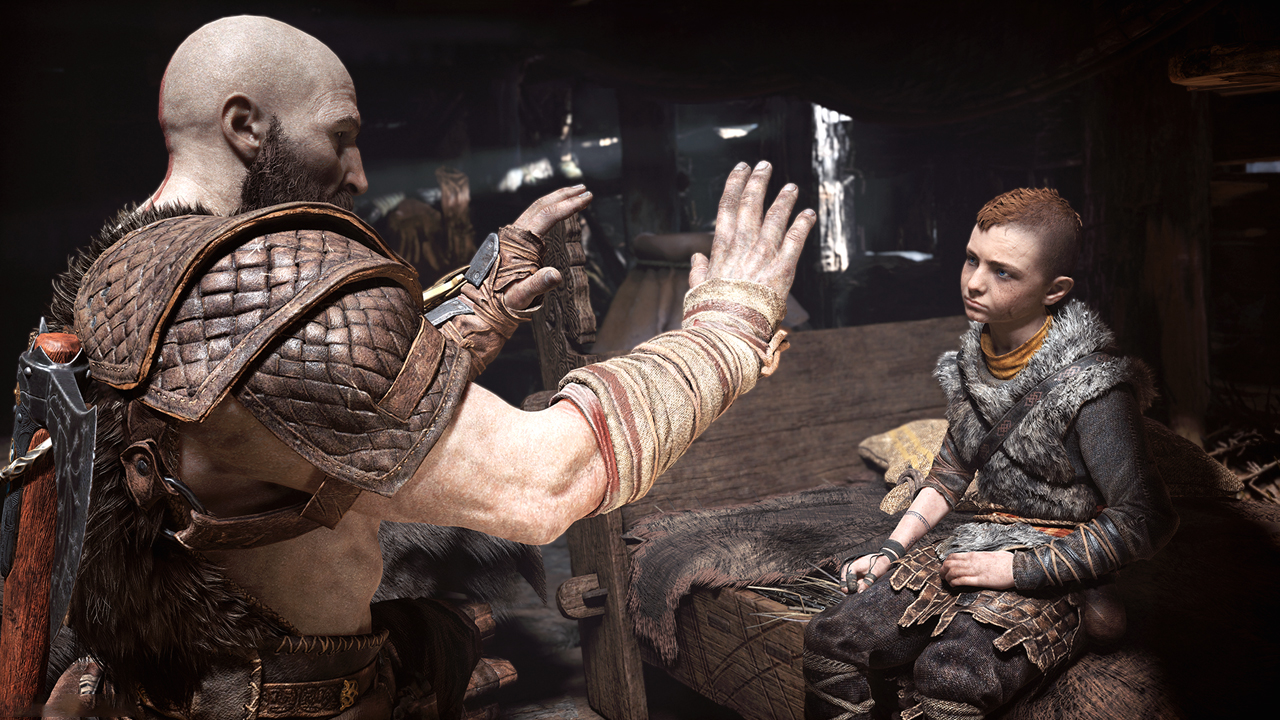
But despite also using a tag-along kid as a means to focus the journey of rehumanisation (and steadily mirror the wider results of violence and self-interest, to create an emotionally difficult inspiration for change), God of War is very much its own game. It enters the journey of self-absorbed, pain-worshipping, toxic masculinity at a different point, and follows a different path, addressing similar issues but having a distinctly separate conversation about them.
But getting back into the systemic stuff, my next moment of skull-buzzing resonance came as I steadfastly carved up an initially insurmountable coastline of high-level enemies. I was on one of those aforementioned tangents of ‘You shouldn’t be here yet’ exploration, and stubbornly digging in. And suddenly, out of nowhere, I felt like I was playing…
Doom
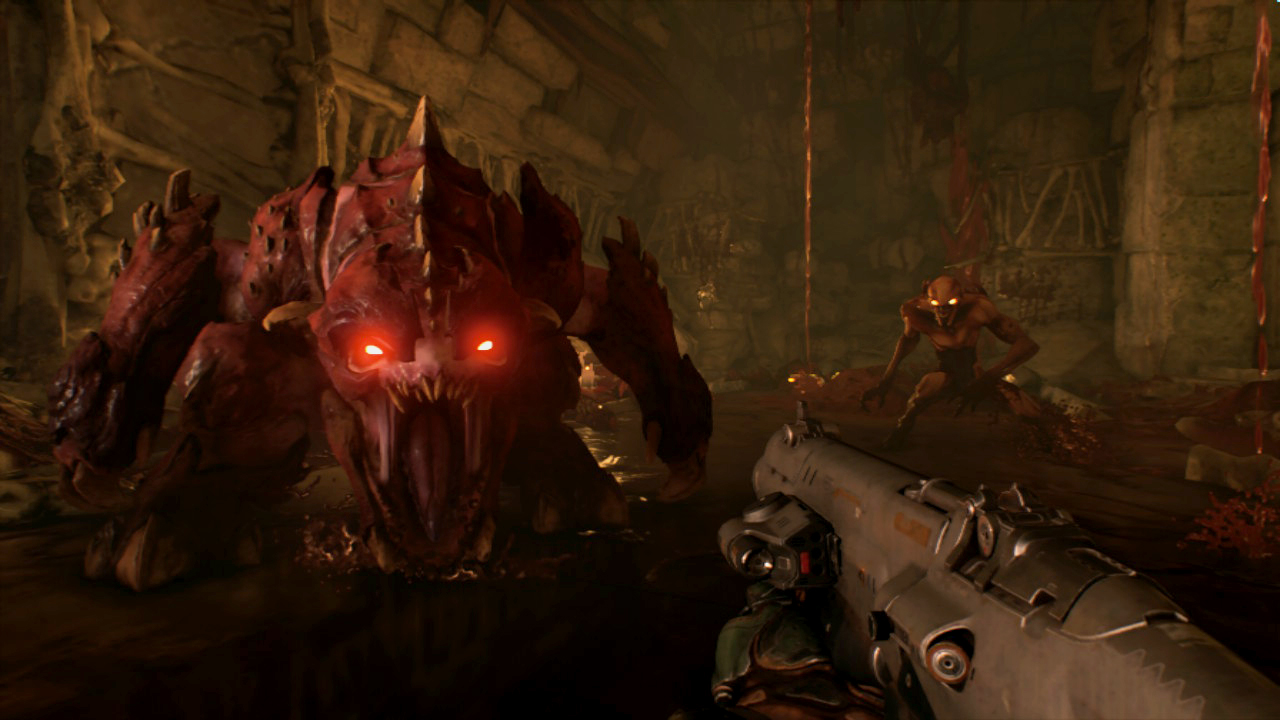
Yeah, Doom: BFA Edition. It sounds really weird, I know, but there’s honestly a hell of a lot of Doom’s frantic, kinetic soul in God of War’s combat. Id’s game might use a million flavours of hilariously destructive sci-fi firearms, where Kratos decidedly favours burying steel through bone with his bare hands, but the underlying philosophies of both games are similar.
For starters, there’s the essence of the player/enemy dynamic. When God of War steps up in difficulty, that relationship often settles around the notion of ‘They’re more powerful than you, but you’re more nimble than them’. That’s quintessential Doom, and results in a familiar, strategic conclusion. Movement is your most powerful weapon. Move or die. Move and destroy. You must dance and sprint around the battlefield, constantly using manoeuvrability to sustain your survival and amplify your lethality. Avoid tunnel-vision on pain of a swift death.
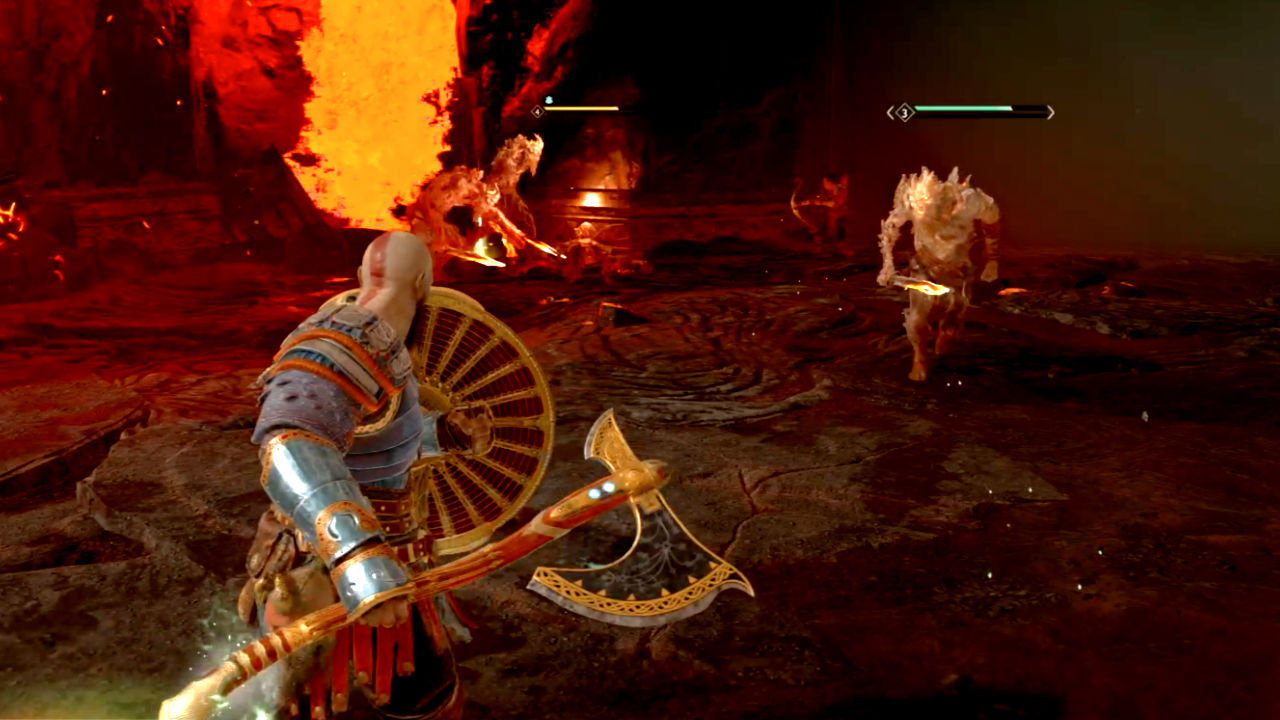
Neither game wants you to get far from the enemy, and both give the facility for skilled players to stay danger-close for prolonged periods while also feeling utterly invincible. Of course, a lot of brawlers have similar conceits, but God of War’s much closer, ground-level, ‘in the thick of it’ camera drastically changes the feel of battle through the player’s direct perception of it. Where Bayonetta and Devil May Cry (and old GoW) happily deliver zoomed-out, tactical views and swift, rangey weapons, God of War’s more claustrophobic immediacy – coupled with the distinctly intimate nature of axe combat - feels far closer to the spirit of frantic, improvisational FPS flow that Doom absolutely thrives on.
And compare the way certain Doom weapons (particularly the plasma rifle’s freeze-shot) are designed to control the flow of incoming threat beyond the immediately accessible area. Compare that to the use of Atreus’s arrows and Kratos’ thrown axe. Compare the similar ways both games invisibly encourage toe-to-toe, evasion-driven fighting. Between proximity-enticing enemy behaviours and the brief, close-range nature of dodge, parry, and retaliation windows, there’s a real drive to drag the player deep inside the fray and keep them there. It’s every bit the hulking Norse death-bastard equivalent of Doom’s central ‘Push-Forward Combat’ philosophy.
And speaking of FPS, shall we talk about Destiny for a moment? Yeah, let’s talk about…
Destiny
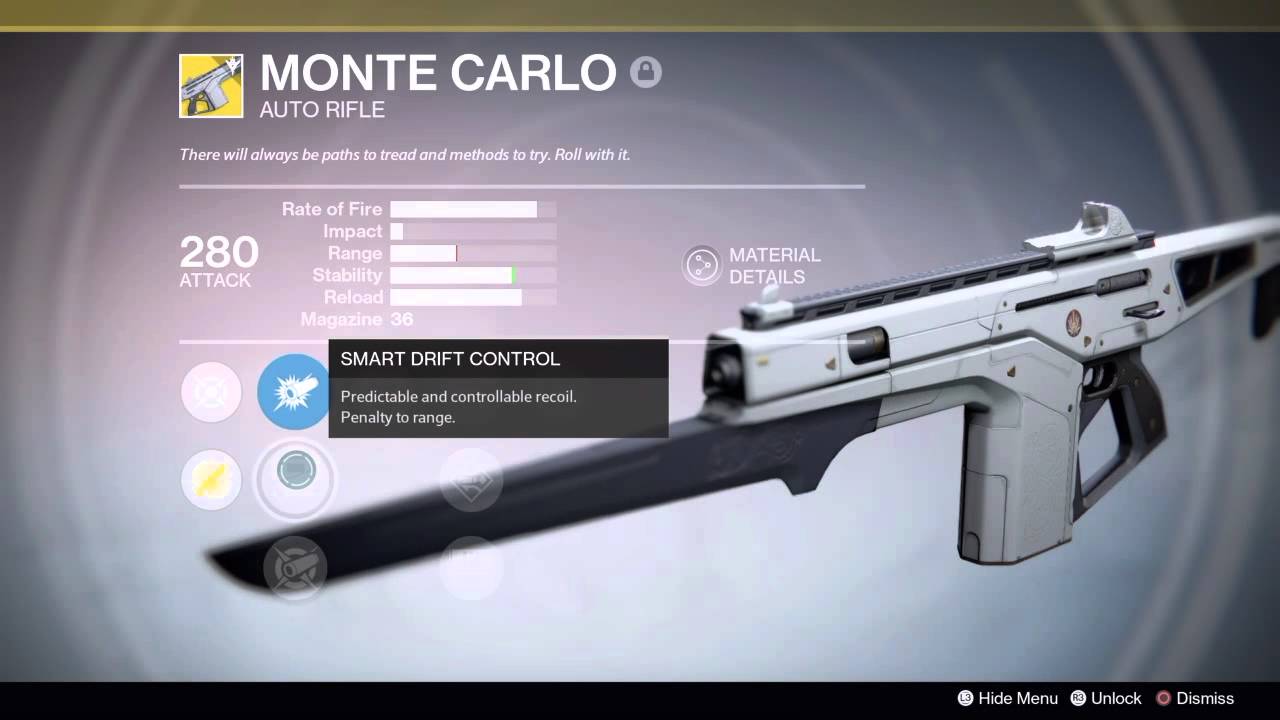
I’m not pretending that Bungie’s game invented the idea of armour perks and class-building. Both of those notions have been around for as long as we’ve had RPGs, pencils, and paper. But there is a definite kinship between how – and why – both games leverage the system. Specifically, where most AAA action games simply fake a sense of character growth through inexorably expanding ability trees – simulating player-authored progress by really just rationing off game systems - Destiny and God of War aim to more specifically bridge the gap between straightforward action game and proper, player-driven, stats-powered RPG, delivering the (optional) depth of the latter without having it dominate the experience.
Both lead their design by ensuring that no player will ever need to dig into the arcane depths of passive buffs, synergistic perk clusters, and so many numbers in order to do well, but both are also designed so that players who do want to pull out the spreadsheets can reimagine the core gameplay with notable versatility. Take the time to start theory-crafting your load-out, whether at a Dwarven blacksmith or in the Vanguard Tower, and you’ll find ways to design specific play-styles and transform multiple, unique elements of combat in powerful, bespoke ways. And beyond this overall philosophy, there are definite parallels between the specifics of both games’ execution.
Each furnishes the player with two separate, special combat abilities on timed cooldowns - illustrated in both games by blue, square icons - augmenting a third, slow-building ‘super’ state represented by a nearby, horizontal yellow bar. Beyond this, while their lead characters have combat-expanding skill trees of their own, the real meat comes from the wide array of tertiary, game-changing perks and buffs, attached instead to accruable armour and accessories.
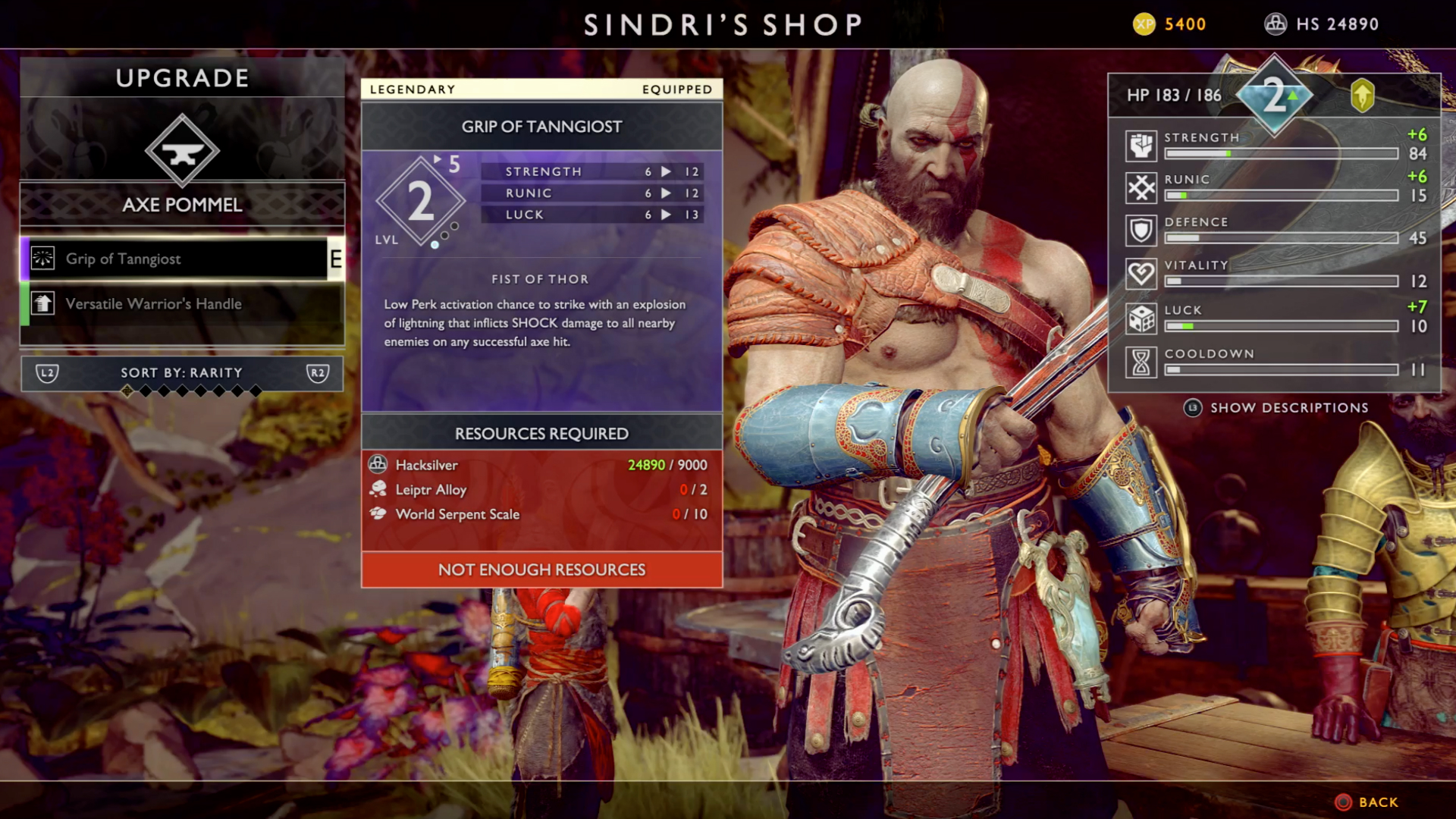
Both passive and triggered by in-game action, these perks can – in addition to managing the aforementioned cooldowns, a la Destiny’s in-built armour stats - lead to a whole lot of uniquely crafted strategies. And with many skills having very powerful, additional perks that only kick in when a particular stat has been driven to an incredibly high level (forcing build specialisation, but offering big rewards for cleverly doing so), there’s also an additional, much longer-term path to even more bespoke power. Compare God of War’s treatment to Destiny’s layers of passive armour perks, active weapon abilities, hidden perk synergies, and specialist, hard-to-acquire Exotic perks (not to mention the way both games categorise the quality and rarity of their gear using similar colouring and terminology), and there’s a very clear line of influence, taking in everything from broad, topline philosophy to granular execution.
Oh, and the skill-tree menus with the big, floating cursor. Those are totally from Destiny. And speaking of skills and gear, there’s one final, specific influence I found when digging into God of War’s load-out screens.
Monster Hunter
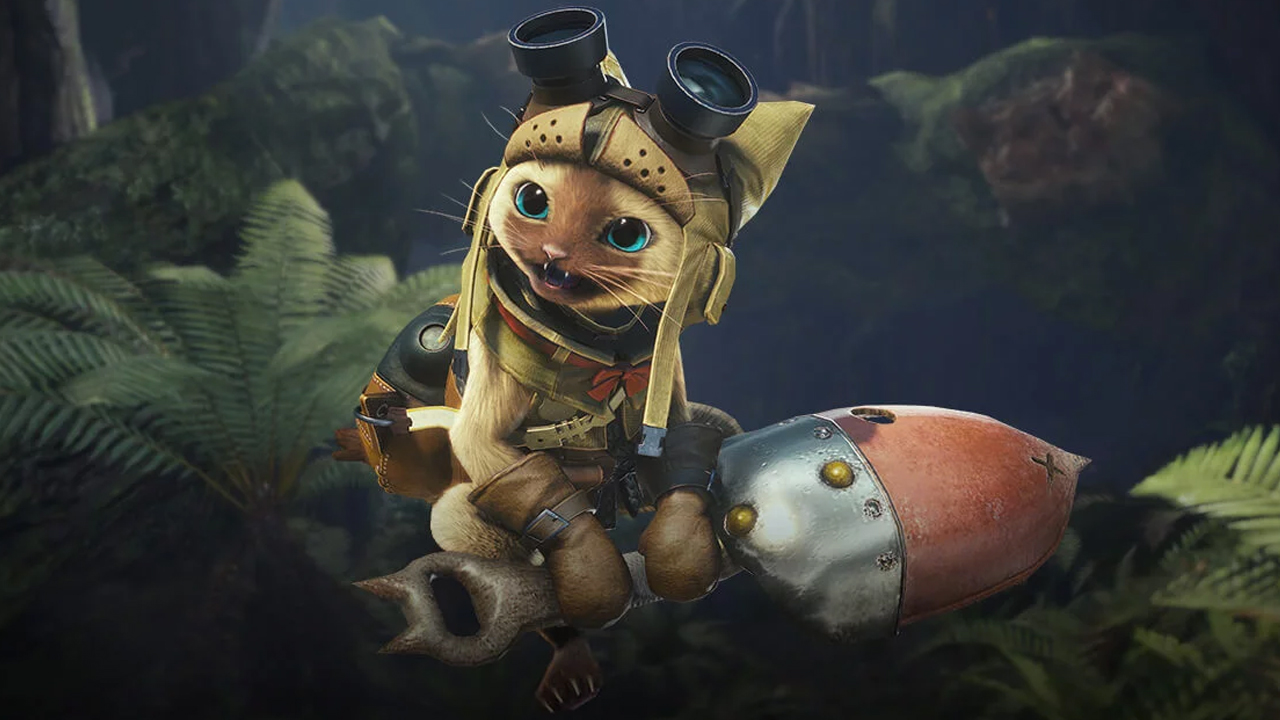
Because Atreus is a Palico. No question about it. He might be the emotional heart of Kratos’ troubled journey through embattled fatherhood, and a fundamental, tangible connection point to God of War’s world and story, but in purely functional combat terms, Atreus is absolutely one of Monster Hunter’s loyal helper-cats. He acts as a distraction in battle, opening up valuable attack windows by snagging enemy attention. He can increase his combat abilities and expand his skillset with experience, and can be equipped with different armour sets to refocus his purpose in multiple different aggressive and curative directions. All of these things are 100% Palico.
Just as with Capcom’s Felyne assistants, Atreus is a brilliantly realised means of humanising a set of gameplay mechanics. He fulfils a lot of traditional RPG support functions, but by following Monster Hunter’s lead and acting autonomously - in tune with the player’s dynamic needs, but responding and pre-empting with only minimal guidance - he becomes a living, breathing part of the game world itself. His small frame and impulsive nature infuses each battlefield with real dynamism, unpredictability, humanity and soul.
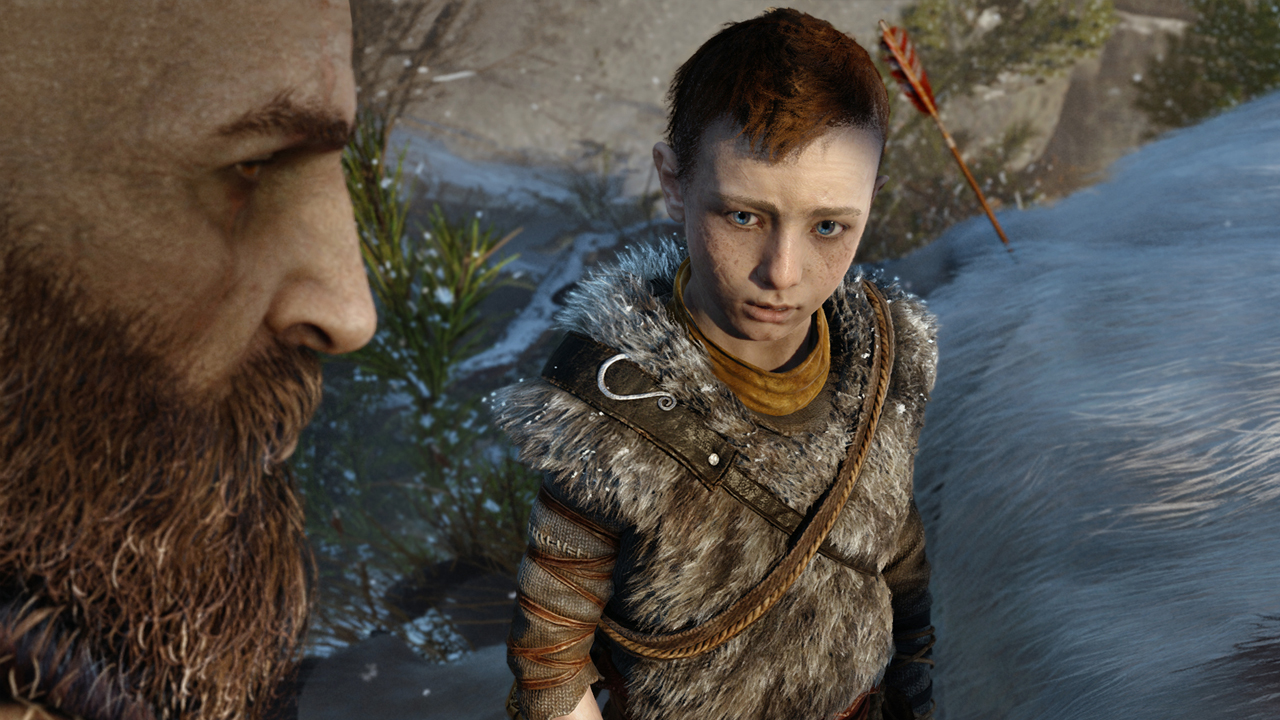
But unlike Capcom’s combat cats, he’s also such a fundamental, ever-present narrative anchor outside of battle that his presence adds an extra layer of dramatic weight to each and every encounter. And afterward, the hardship of each fight is then carried through him, ambiently, into the ongoing father/son relationship. It’s a hell of a feedback loop, and one of the best distillations of God of War’s ability to spot the core essence of a great idea, and then really understand how to adapt it to serve an entirely different purpose. God of War. It’s basically all the games. But also resolutely, uniquely itself.



